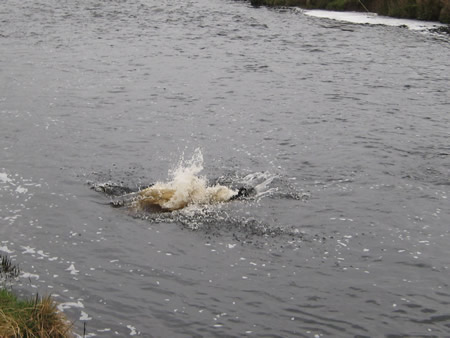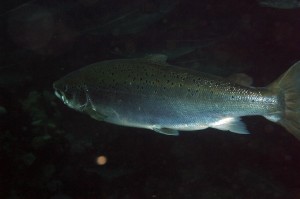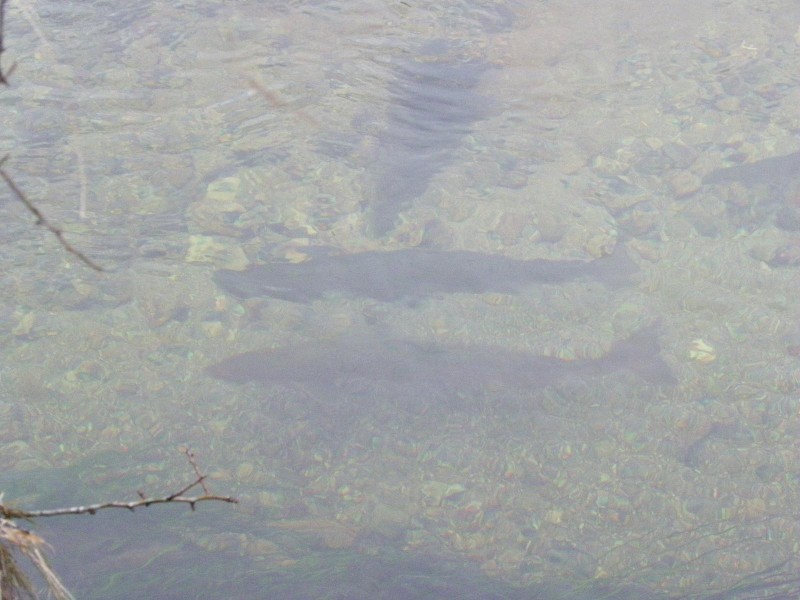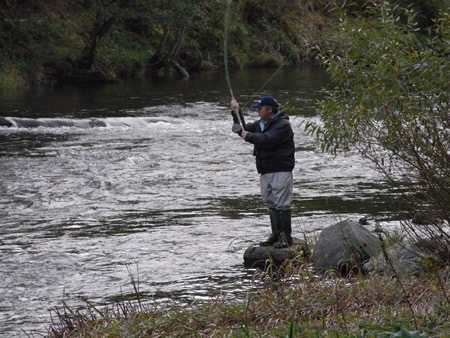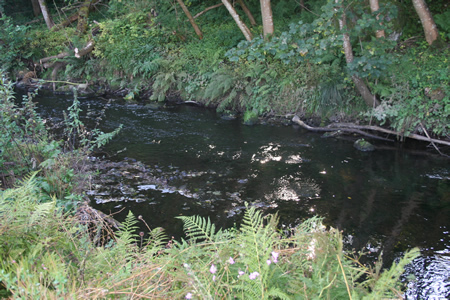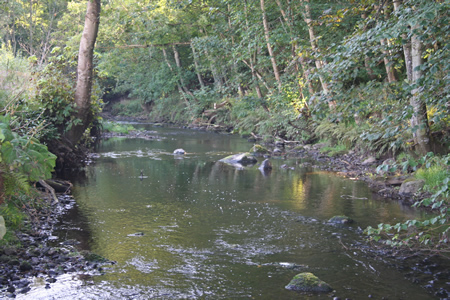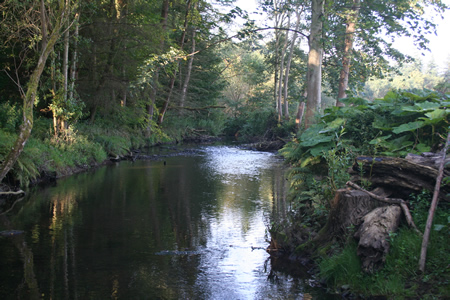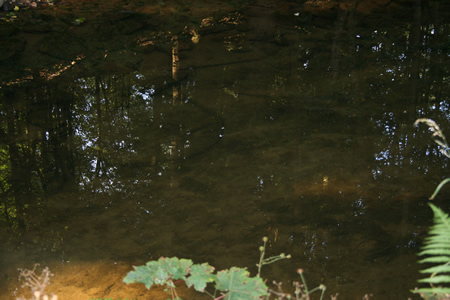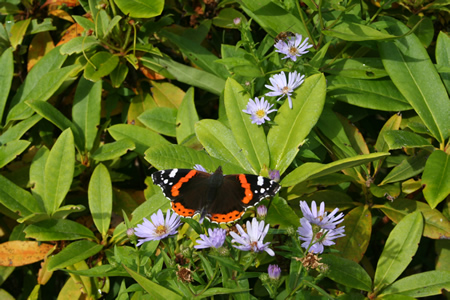These bulletin blogs represent news about Finavon and the South Esk, and my views as a riparian owner. They are not the views of any other organisation, nor are they designed to promote the interests of any individual or organisation other than Finavon Castle Water and factors affecting the fishery. Tony Andrews
I have just seen the Marine Scotland leaflet entitled “Spring Salmon in the South Esk”
www.scotland.gov.uk/Resource/0040/00403706.pdf
which summarises with admirable clarity how the government is approaching the perceived problem of the scarcity of spring salmon in the river. I say “perceived” only because the whole thesis is based on a shaky foundation, namely the rod catch statistics since 2005. But the chain of logic that follows the assumption that there is a problem is impeccable! The conclusion – to find out where the early running fish lay their eggs, and therefore where the spring fish juvenile habitat is – is in my opinion a sensible and achievable objective.
Why does a group of experienced observers, with an accumulated experience of watching, managing, fishing and working on the South Esk of over 150 years, think that the spring salmon problem specific to the South Esk (as opposed to any other east coast river) has been exaggerated, and may not even exist at all?
An explosive take from a fresh salmon ‘off the tide’ on a small fly fished close to the surface is the pinnacle of spring salmon fishing. There are too few of such moments. This was the Thurso in April.
I do not deny that there is a general problem with abundance of spring salmon throughout the southern part of the range of the Atlantic salmon. My contention is that there is no reliable data to show that the South Esk is relatively worse off than any other river, however many smartly presented graphics, graphs and tables of catch returns are published. By using the word “trend” the MS paper is giving undue certainty and authority to rod catches when the only certain and measurable trend has been the changes in fishing intensity. I have no objection to the term “indication”, but it really is over-egging the role of rod catches to claim that they show a “trend” in stock abundance. The problem is not the fish themselves; it is that no-one involved in their management in the South Esk has any idea how many fish there are, nor how the stock is structured.
1. Catch returns for spring salmon on some middle & upper beats show that the last seven years are among the best in any period of seven years in the last 120 years, despite low fishing effort during the most recent period. The lack of any mention of reduced effort is a glaring omission in the case presented by Marine Scotland. It may be an obvious truth – but worth saying – that if there are less people fishing the river, catches are likely to be reduced. I have tried to devise a reliable method of measuring effort by combining numbers of anglers with experience, skill and local knowledge; I am still working on it! What I can say is that fishing effort at Finavon in the months of February, March, April and May is about 40% of what it was prior to 2005. The question as to whether increased effort would result in more fish caught remains unanswered. However, if rod fishing effort were increased at a time of low water it is unlikely that any more salmon would be caught, because the effectiveness of South Esk angling, more than its larger neighbouring rivers, is dependent on good flows.
2. Improvements to the Kinnaird Dam below Brechin now allow spring fish to disperse throughout the extensive South Esk catchment far earlier in the year than was ever possible while the dam in its unimproved state existed. I have written about the damaging impact of the various dams on the South Esk in previous blogs. Their removal or improvement to fish passage is the biggest physical change to the river in two hundred years, and is certain to have had a profound effect on migratory fish behaviour within the catchment.
The view up Tyndals Pool (Milton Beat) in May 2012
3. Fish trapped below Kinnaird Dam in the early season pre 1995, before the fish pass was improved, were easy prey to rod anglers on the Upper Kinnaird beat, which had a reputation as one of the best spring beats in Scotland. The high numbers of ‘trapped fish’ exaggerated the catches on that beat. Now that fish are dispersed in low densities throughout the system early in the year there is no such catch distortion, and salmon are seen and some are caught as early as March on upper beats.
4. The two years, 2010 and 2011, were noted as good spring salmon years by some South Esk middle river proprietors. The 2011 spring run in particular was the best for many years, with comments by long standing observers of the river that the abundance of multi sea-winter spring salmon was “the best for thirty years”. It is also interesting to note that the Usan nets killed 2307 salmon in the month of May 2011 alone at the very time that upper proprietors were observing unusually high numbers of salmon in their pools. Most if not all the salmon seen and caught in these two years were multi sea-winter fish in good condition and of course, for such large numbers to exist, there must have been successful spawning followed by survival and good feeding – in the river and at sea – in the preceding five years.
5. A friend who is active in the management of the River Spey said to me recently that my assertion that the South Esk produces an average of 180,000 smolts each year is probably wrong. He argued that Spey biologists calculate that the Spey produces an average of 750,000 smolts annually, which produces an average rod catch of about 8600 salmon and grilse (2000-2007), whereas the South Esk has an average (2000-2007) of 1,090 rod caught fish. I inferred from his comment that he thought my calculation was more likely to be wrong than the Spey smolt estimate. While I bow to the undoubted excellence of the Spey biologists, I don’t agree with him on that point! The South Esk catch is (or was until 2007) about one eighth of the Spey catch. People who read these blogs may be familiar with my reasoning on South Esk numbers, which incidentally, has not yet been challenged, not that the lack of a challenge reflects their accuracy, only that no-one has come up with alternative figures.
From the average rod catch I assumed that about 10,000 salmon & grilse run the S Esk each year, of which about 50% are probably female, with an average weight of about 8lbs. Each spawning female should deposit about 4,500 eggs and, allowing for natural mortality, I assumed about 4000 females would succeed in spawning. Of the 18 million eggs thus deposited I assumed (on the basis of averages across the southern range of Atlantic salmon) that one percent (1%) of those eggs would survive to become smolts, which gives a South Esk annual smolt output of about 180,000.
The Spey rod catch average of 8,600 (to 2007) might suggest an average seasonal run of salmon and grilse of about 85,000 (at 10% of rod catch exploitation) or 43,000 (at 20%). Let’s split the difference and say that rod catches are 15% of the total stock (a high figure) which gives an average of c.64,000 salmon and grilse accessing the Spey catchment. If 50% are female and the average weight 8lbs (might it be more?), and allowing for natural wastage, we might assume that there are 25,000 female salmon each depositing about 4,500 eggs, which gives a figure of c.112.5 million eggs. If we then apply the 1% ova to smolt average we might assume that the River Spey produces about 1.125 million smolts. I have to say that I find that a more persuasive figure than 750,000 which, with sea mortality at about 93.5% (MSW salmon and grilse) would suggest an average return migration of 48,750, whereas 1.125 million smolts should by the same calculation produce around 73,000 returning adult fish, which I find quite persuasive in itself and a more realistic relationship with my suggested South Esk smolt production average of 180,000.
TA 6/10/2012
